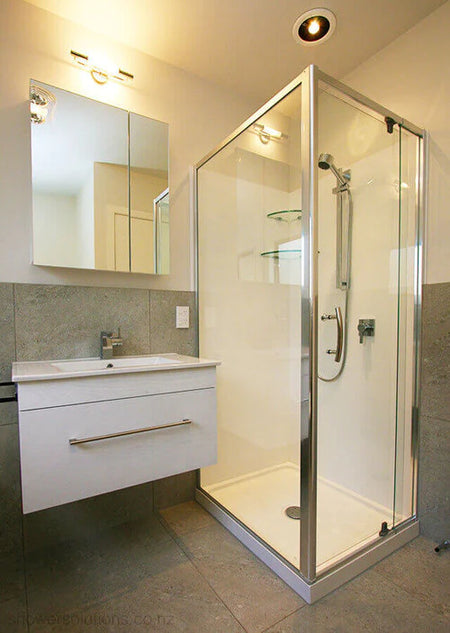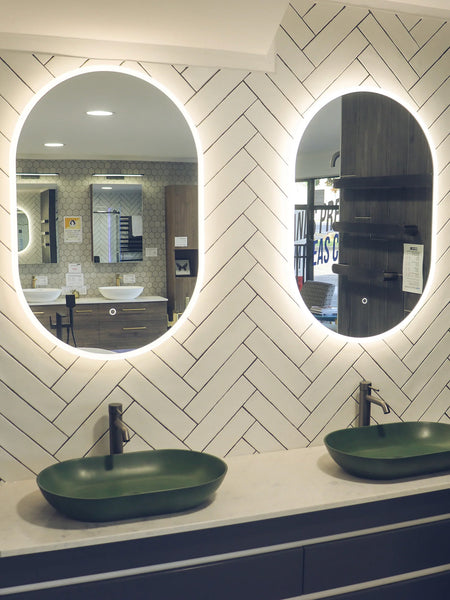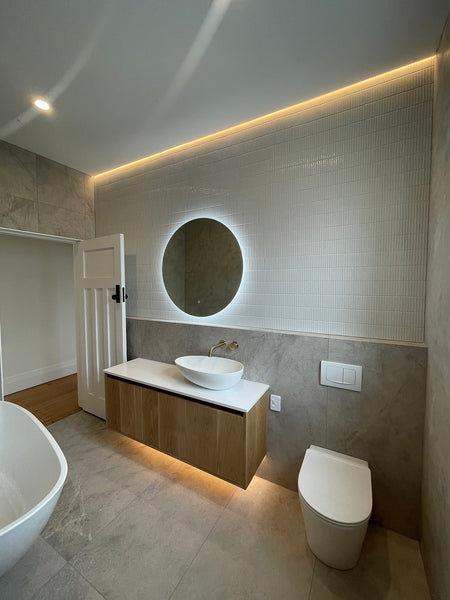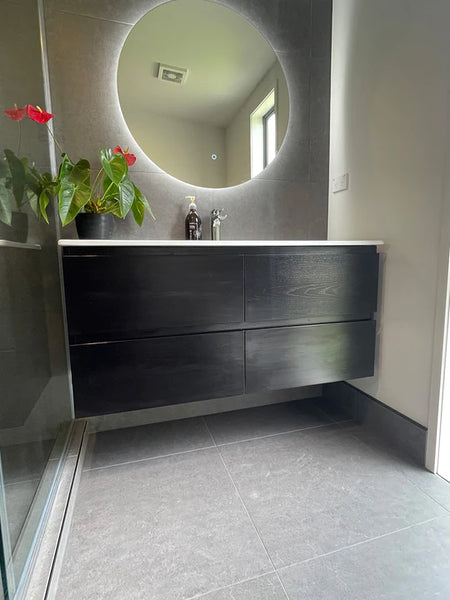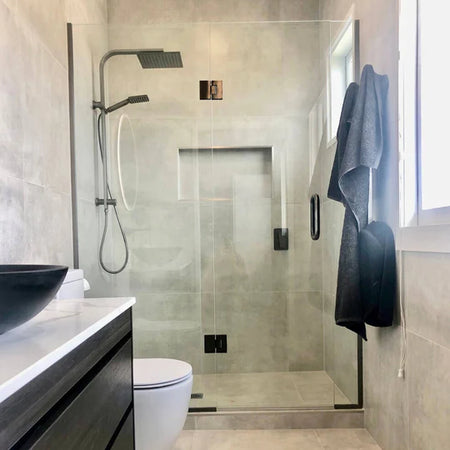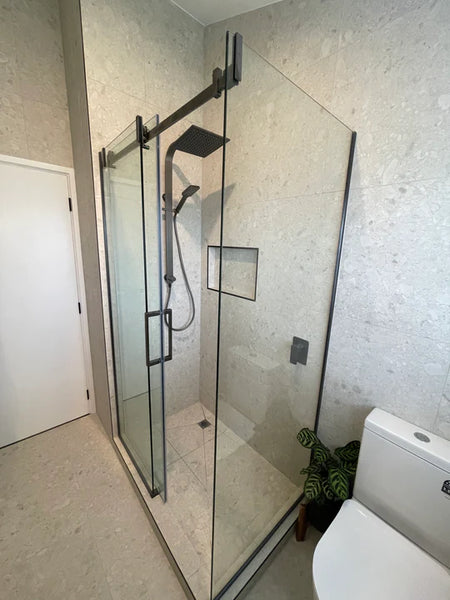Home renovations often involve a range of considerations and decisions. Here are some frequently asked questions (FAQs) that homeowners may have when planning or undergoing home renovations:
What is the average cost of a bathroom renovation?
The average cost of a bathroom renovation can vary widely based on factors such as location, the scope of the project, and the materials used. In general, a mid-range bathroom remodel can cost around $10,000 to $15,000, while a high-end renovation can go well beyond $20,000.
How much should I budget for a basic bathroom remodel?
For a basic bathroom remodel, you might want to budget between $5,000 and $10,000. However, keep in mind that this is a rough estimate, and costs can vary based on your specific needs and choices.
What factors can significantly impact the cost?
Several factors can impact the cost of a bathroom renovation, including the quality of materials, the size of the space, the need for plumbing or electrical work, and whether you choose to hire professionals.
How can I maximize space in a small bathroom?
Design tips and tricks:
- Use light colors to create a sense of openness.
- Install a wall-mounted sink or vanity to free up floor space.
- Opt for a frameless shower enclosure to make the room appear larger.
- Incorporate mirrors to reflect light and create the illusion of space.
Space-saving fixtures and storage solutions:
- Choose a compact toilet and a corner shower.
- Install open shelving or built-in niches for storage.
- Use vertical space with tall cabinets or shelves.
What are the latest trends in bathroom design?
Popular materials, colors, and styles for modern bathrooms:
- Materials: Natural stone, wood, and matte finishes.
- Colors: Neutral tones with pops of bold colors.
- Styles: Minimalist, industrial, and spa-inspired designs.
How can I ensure that my bathroom remains stylish for years to come?
Consider timeless design elements and neutral color schemes. Focus on classic fixtures and materials, allowing for easy updates through accessories and decor.
Should I hire a professional or DIY my bathroom renovation?
When to hire a contractor:
- If the project involves structural changes or major plumbing/electrical work.
- For complex installations such as tile work or custom cabinetry.
- When permits are required.
DIY tasks:
- Painting.
- Installing simple fixtures.
- Adding accessories and decor.
How long does a bathroom renovation typically take?
The timeline for a bathroom renovation varies, but on average, it can take anywhere from 2 to 4 weeks. Factors like the project's complexity, size, and the availability of materials can impact the duration.
What fixtures should I upgrade in my bathroom?
Most important fixtures to consider:
- Toilet: Consider water-efficient models.
- Shower/Bathtub: Opt for modern and stylish fixtures.
- Vanity/Sink: Choose a functional and aesthetically pleasing option.
Water-efficient or smart fixtures:
- Low-flow toilets and faucets.
- Smart thermostatic shower systems.
How do I choose the right tiles for my bathroom?
Factors to consider:
- Material: Porcelain and ceramic are popular for durability.
- Size and pattern: Larger tiles can make a small space feel bigger.
- Water resistance: Ensure the tiles are suitable for bathroom use.
What lighting options work best in a bathroom?
Achieving good lighting:
- Use a mix of ambient, task, and accent lighting.
- Consider LED fixtures for energy efficiency.
- Install lighting around the vanity mirror for optimal task lighting.
Energy-efficient lighting options:
LED fixtures are energy-efficient and come in various styles, making them suitable for bathroom lighting.
How can I make my bathroom more eco-friendly?
Sustainable materials and products:
- Recycled or reclaimed wood for vanities.
- Low VOC paints.
- Water-saving fixtures and faucets.
Water-saving strategies and fixtures:
- Install low-flow toilets and showerheads.
- Consider a dual-flush toilet for water conservation.
What ventilation options should I include in my bathroom?
Preventing mold and moisture issues:
- Install an exhaust fan to remove excess moisture.
- Consider a fan with a built-in humidity sensor.
- Ensure proper ventilation for windows or vents.
Recommended exhaust fans or ventilation systems:
Choose a fan with sufficient capacity for your bathroom size, and consider energy-efficient models.
Should I install a bathtub or a shower?
Pros and cons:
- Bathtub: Ideal for relaxation but requires more space.
- Shower: Space-efficient and convenient for daily use.
Having both in your bathroom:
If space allows, a combination of a shower and bathtub can provide versatility. Optimize the layout to make the best use of available space.
How can I increase storage in my bathroom?
Creative storage solutions:
- Utilize vertical space with tall cabinets or shelves.
- Install built-in niches or recessed shelving in the shower.
- Use under-sink organizers for efficient use of space.
Adding built-in storage:
Consider custom-built cabinets or shelving to maximize storage without sacrificing space.
Do I need special flooring for the bathroom?
Suitable flooring options:
- Materials: Ceramic or porcelain tiles, vinyl, and natural stone.
- Water resistance: Choose flooring that can withstand moisture.
- Style: Select a flooring material that complements your overall design.
Stylish and water-resistant options:
Porcelain tiles and luxury vinyl flooring are popular choices that combine style with water resistance.
What color scheme works well in a bathroom?
Creating a relaxing and spacious feel:
- Colors: Light and neutral tones create a calming atmosphere.
- Accents: Add pops of color through accessories and decor.
Incorporating color without overwhelming the space:
Choose a neutral base color for walls and large surfaces, and use vibrant colors in towels, rugs, and other accessories.
How can I add accessibility features to my bathroom?
Modifications for individuals with mobility challenges:
- Install grab bars near the toilet and shower.
- Consider a curbless shower for easy access.
- Ensure ample space for maneuverability.
Stylish and functional options for accessible fixtures:
Choose grab bars and fixtures that blend seamlessly with your bathroom's design, combining both aesthetics and functionality.

